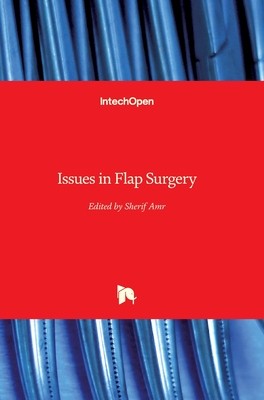
- We will send in 10–14 business days.
- Publisher: IntechOpen
- Year: 2018
- Pages: 190
- ISBN-10: 1789230128
- ISBN-13: 9781789230123
- Format: 17 x 24.4 x 1.3 cm, kieti viršeliai
- Language: English
- SAVE -10% with code: EXTRA
Issues in Flap Surgery (e-book) (used book) | bookbook.eu
Reviews
Description
The development of flap surgery parallels the increasing complexity of soft-tissue defects needing reconstruction. Random and pedicled flaps as well as free muscle and fasciocutaneous flaps have helped to reconstruct single soft-tissue defects. The multiplicity of defects needing reconstruction and donor-site morbidity in addition to tailored reconstruction have called for a revision of flap concepts in favor of perforator flaps. Unfortunately, we are faced with increasingly complex reconstructive issues. New reconstructive techniques, such as the Ilizarov method, have made orthopedic reconstruction after high energy and complex trauma possible. Revision surgeries after tumor resection and plastic surgery have brought about soft-tissue defects associated with extensive fibrosis and necrosis. As a result, previously nonsalvageable limbs have been salvaged. The reconstructive surgeons are faced with the following situations: multiple soft-tissue defects, extensive fibrosis, possibility of major vessel loss, and possibility of damage of several perforators.
EXTRA 10 % discount with code: EXTRA
The promotion ends in 22d.06:07:43
The discount code is valid when purchasing from 10 €. Discounts do not stack.
- Publisher: IntechOpen
- Year: 2018
- Pages: 190
- ISBN-10: 1789230128
- ISBN-13: 9781789230123
- Format: 17 x 24.4 x 1.3 cm, kieti viršeliai
- Language: English English
The development of flap surgery parallels the increasing complexity of soft-tissue defects needing reconstruction. Random and pedicled flaps as well as free muscle and fasciocutaneous flaps have helped to reconstruct single soft-tissue defects. The multiplicity of defects needing reconstruction and donor-site morbidity in addition to tailored reconstruction have called for a revision of flap concepts in favor of perforator flaps. Unfortunately, we are faced with increasingly complex reconstructive issues. New reconstructive techniques, such as the Ilizarov method, have made orthopedic reconstruction after high energy and complex trauma possible. Revision surgeries after tumor resection and plastic surgery have brought about soft-tissue defects associated with extensive fibrosis and necrosis. As a result, previously nonsalvageable limbs have been salvaged. The reconstructive surgeons are faced with the following situations: multiple soft-tissue defects, extensive fibrosis, possibility of major vessel loss, and possibility of damage of several perforators.


Reviews